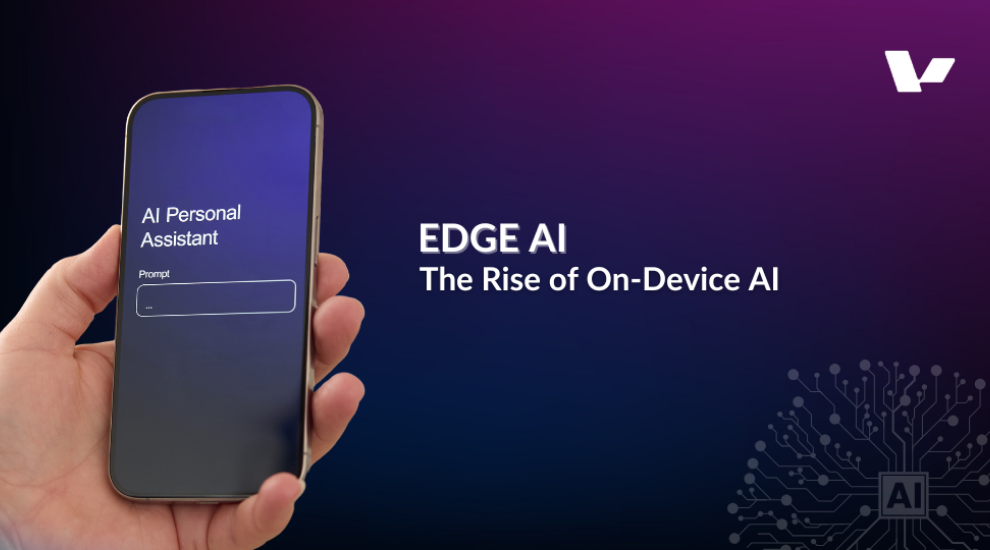Introduction
The rapid evolution of artificial intelligence (AI) has transformed industries, from healthcare to automotive. But as devices become smarter, the demand for faster, more efficient, and privacy-centric solutions is pushing innovation beyond the cloud. Enter Edge AI—a paradigm shift that brings AI processing directly to smart devices, enabling real-time decision-making without relying on centralized servers. This article explores how Edge AI is revolutionizing smart devices, its applications, challenges, and what the future holds.
What is Edge AI?
Edge AI refers to the deployment of AI algorithms directly on hardware devices (the “edge” of the network) rather than in centralized data centers or the cloud. By processing data locally, Edge AI minimizes latency, reduces bandwidth usage, and enhances privacy. For example, a security camera with Edge AI can analyze video footage on-device to detect intruders, instead of sending data to a remote server.
This approach leverages lightweight machine learning models optimized for low-power chips, such as GPUs, TPUs, or specialized neural processing units (NPUs). The result? Smarter devices capable of autonomous operation without constant internet connectivity.
Edge AI vs. Cloud AI: Key Differences
Traditional cloud-based AI relies on sending data to remote servers for processing, which introduces delays and dependency on connectivity. Here’s how Edge AI outperforms its cloud counterpart:
- Latency Reduction:
Edge AI processes data in milliseconds, critical for applications like autonomous vehicles or industrial robots. - Bandwidth Efficiency:
Transmitting raw data (e.g., video streams) to the cloud consumes massive bandwidth. Edge AI filters and sends only relevant insights. - Enhanced Privacy:
Sensitive data (e.g., medical diagnostics) stays on-device, reducing exposure to breaches. - Offline Functionality:
Devices operate seamlessly in areas with poor connectivity, like rural farms or disaster zones.
Applications of Edge AI in Smart Devices
From wearables to smart homes, Edge AI is unlocking new possibilities:
1. Smartphones and Cameras
Modern smartphones use Edge AI for features like facial recognition, night-mode photography, and voice assistants. For instance, Apple’s Neural Engine powers real-time image processing, while Google’s Pixel phones enhance photos using on-device ML models.
2. Healthcare Wearables
Devices like smartwatches analyze heart rate, sleep patterns, and blood oxygen levels locally. Edge AI enables early detection of anomalies (e.g., atrial fibrillation) without compromising user privacy.
3. Industrial IoT
Factories deploy Edge AI for predictive maintenance. Sensors on machinery analyze vibrations or temperature to predict failures, avoiding costly downtime.
4. Autonomous Vehicles
Self-driving cars process terabytes of sensor data (lidar, cameras) in real time to navigate safely. Edge AI ensures split-second decisions, such as collision avoidance.
5. Smart Home Devices
Voice assistants like Amazon Echo or Google Nest process commands locally for faster responses. Edge AI also optimizes energy use in thermostats and security systems.
Challenges in Adopting Edge AI
While promising, Edge AI faces hurdles:
- Limited Computational Power:
Compact devices struggle to run complex AI models. Solution: Hardware advancements like neuromorphic chips. - Energy Efficiency:
AI computations drain batteries. Developers optimize models (e.g., TensorFlow Lite) to balance performance and power use. - Security Risks:
On-device data is still vulnerable. Federated learning and encryption mitigate risks. - Model Updates:
Deploying updates across millions of devices is logistically challenging. Over-the-air (OTA) updates and hybrid cloud-edge systems help.
The Future of Edge AI
The Edge AI market is projected to exceed $107 billion by 2029 (Source: Fortune Business Insights). Key trends shaping its future include:
- TinyML: Ultra-efficient ML models for microcontrollers, enabling AI in $5 sensors.
- 5G Integration: Combining Edge AI with 5G’s speed for applications like augmented reality (AR) and smart cities.
- AI Democratization: Low-code platforms allow SMEs to build custom Edge AI solutions without deep expertise.
- Ethical AI: Addressing biases in on-device models and ensuring transparency.
Conclusion
Edge AI represents a monumental leap in making smart devices truly intelligent. By bringing processing closer to the source of data, it addresses critical limitations of cloud dependency while unlocking innovations across industries. As hardware advances and AI models become more efficient, Edge AI will redefine how we interact with technology—making our devices faster, safer, and more responsive than ever.
FAQ: Edge AI Explained
Q1: How is Edge AI different from Cloud AI?
A: Edge AI processes data locally on devices, while Cloud AI relies on remote servers. Edge AI offers lower latency, better privacy, and offline use.
Q2: What are the benefits of Edge AI for businesses?
A: Reduced operational costs, faster insights, improved data privacy, and scalability for IoT deployments.
Q3: Can Edge AI work without the internet?
A: Yes! Edge AI functions offline, making it ideal for remote or unreliable connectivity environments.
Q4: Which industries benefit most from Edge AI?
A: Healthcare, manufacturing, automotive, agriculture, and smart cities.
Q5: Is Edge AI secure?
A: While risks exist, techniques like encrypted processing and federated learning enhance security.
Q6: Will Edge AI replace Cloud AI?
A: Unlikely. Hybrid models (combining edge and cloud) will dominate, balancing speed and scalability.
Read more Article Future Trends & News
